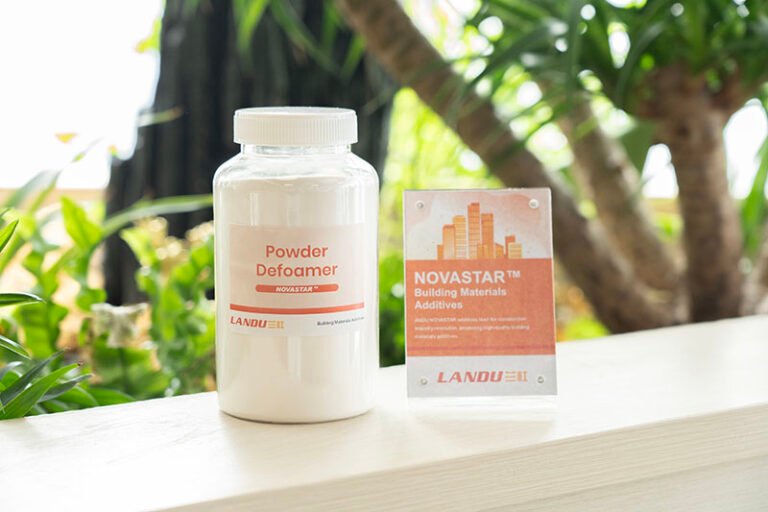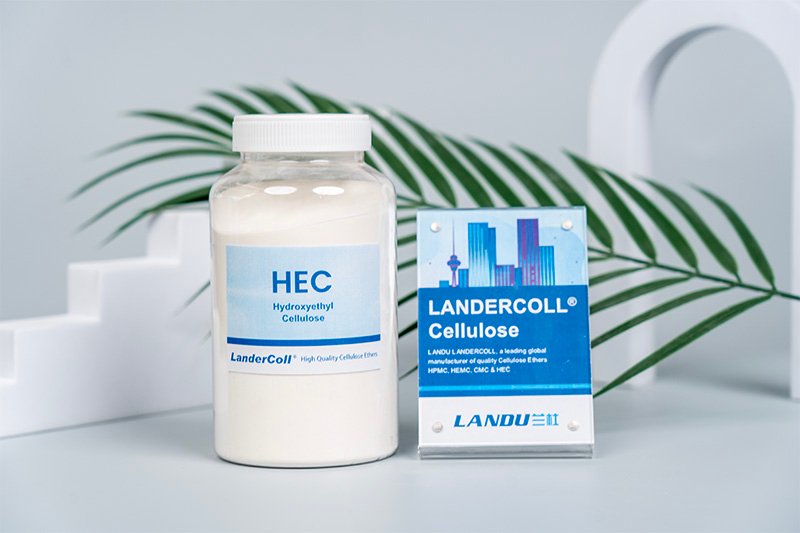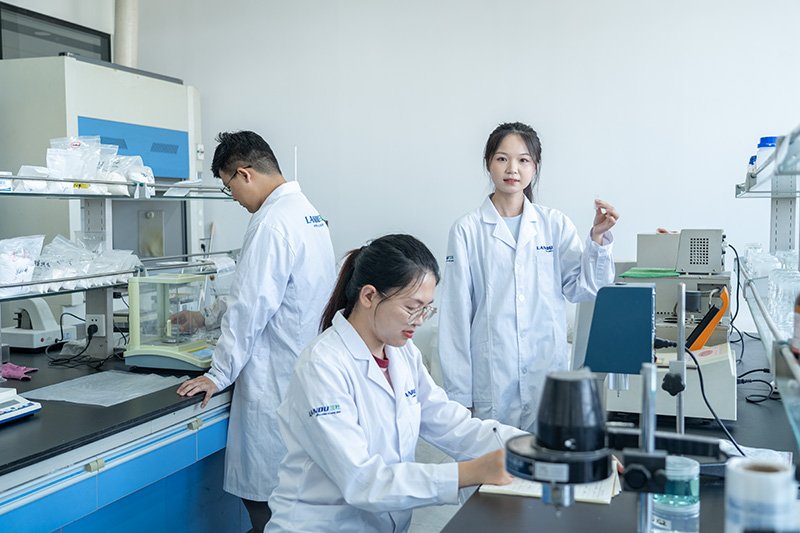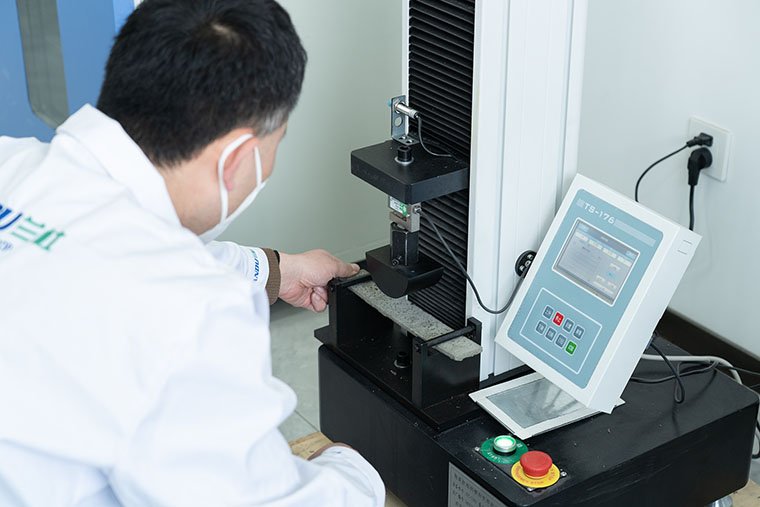Executive Summary
In the realm of ceramic production, hydroxypropyl methylcellulose (HPMC) stands out as an exceptionally adaptable organic compound. It multitasks effectively as a cohesive binder, flexibility enhancer, flow regulator, and moisture preserver, thereby steadying liquid mixtures and dough-like pastes, facilitating easier shaping, bolstering pre-fired durability, and curbing flaws induced by evaporation. This comprehensive overview compiles actionable, method-tailored recommendations for areas like tile compositions, bathroom fixtures, surface coatings and underglazes, extrusion processes and thin-film casting, sophisticated engineering ceramics (including alumina and zirconia variants), and innovative approaches such as robotic deposition. Readers will discover underlying principles, criteria for variant choices, standard addition levels, preparation and verification procedures, decomposition protocols, problem-solving strategies, and efficiency-boosting tactics—empowering you to craft superior, reliable ceramics with reduced waste.
1) Defining HPMC and Its Significance
HPMC represents a hydrosoluble derivative of cellulose, synthesized through precise attachment of methoxy and hydroxypropyl units to the base polymer chain. These modifications underpin two pivotal traits essential for ceramic applications:
- Dissolution and swelling patterns: HPMC readily scatters in chilled liquids, absorbs water, and escalates thickness, establishing a seamless web that captures moisture and links particulate matter.
- Heat-induced solidification: When temperatures surpass a defined threshold, HPMC shifts from a fluid state to a semi-solid gel, momentarily heightening resistance to flow and aiding formed pieces in holding their contours amid initial dehydration.
Within ceramic formulations, these attributes yield four fundamental roles:
- Cohesion: Through molecular attractions and layer development, it forges connections between grains, elevating unfired robustness and boundary sharpness.
- Softening: The substance’s slippery nature diminishes particle-to-particle rubbing, easing molding pressures and broadening the viable hydration spectrum.
- Flow management: Responsive thinning under force, recoverable structure, and initial resistance stabilize blends and masses, thwart segregation, and promote even distribution in pouring or forcing techniques.
- Hydration preservation: By retaining liquids and tempering vapor loss, HPMC alleviates suction forces and uneven moisture profiles that trigger bending, uplifting, or fractures.
Why does this matter in a field as ancient yet evolving as ceramics? Imagine crafting intricate pottery or high-tech components without these aids—flaws like cracks or inconsistencies would skyrocket, driving up costs and delays. HPMC bridges traditional artistry with modern efficiency, enabling manufacturers to push boundaries in precision and scale.
2) Mechanisms of HPMC in Ceramic Mixtures and Suspensions
Grasping the science behind HPMC empowers better decisions on types and quantities, turning potential pitfalls into predictable successes.
2.1 Interactions Between Particles and Polymer
- Surface attachment: HPMC gently clings to ceramic exteriors through atomic links and charged affinities, generating slender, slick coatings that cut down on drag during movement (a boon for forcing through dies or spreading in molds).
- Linking and layer creation: As liquids evaporate, HPMC densifies and merges into barriers at contact zones; these reinforcements explain heightened unfired toughness and opposition to crumbling prior to high-heat treatment. For instance, in a tile press, this bridging prevents granules from fracturing under compression, much like glue holding puzzle pieces together.
- Web-like influences: Amid aqueous environments, HPMC forms intertwined chains. Such structures confer resistance to settling and a baseline hold that averts layering in liquid preparations, ensuring uniformity from batch start to finish.
Expanding on this, consider how these interactions adapt to particle size: finer powders demand more HPMC for coverage, while coarser ones benefit from its lubricating effects to reduce wear on equipment.
2.2 Handling Moisture and Evaporation Tensions
- Moisture conservation decelerates surface drying, compressing the disparity in wetness from outer layers to inner cores. Tighter disparities equate to diminished pulling forces, thereby lessening distortions, rim rises, and curved breaks.
- Regulated evaporation pace permits additives to reposition evenly, countering outer hardening and crusting that imprison dampness and foster hidden fissures. In practical terms, this means fewer rejects in humid climates where uneven drying is common, or in arid zones where rapid loss exacerbates issues.
Think of it as a protective shield: without HPMC, water flees unevenly, stressing the material like uneven baking warps dough; with it, the process smooths out for flawless results.
2.3 Heat Solidification and Form Retention
- HPMC solidifies beyond a particular thermal bracket (tied to its chemical makeup), briefly rigidifying structures as they heat up. Within drying chambers or heated enclosures, this transformation assists components in defying sagging, upholding shapes, and safeguarding precise outlines.
For example, in producing delicate honeycomb structures, this gel phase acts as a temporary scaffold, preventing collapse until the piece stabilizes. Adjustments in gel point can tailor this to specific kiln setups, making HPMC a customizable ally in variable production lines.
3) Choosing Grades: Customizing HPMC for Your Method
Variety exists among HPMC options. Optimal selection involves aligning thickness, chemical balance, and activation speed with your shaping approach and material base.
3.1 Thickness (Stand-In for Chain Length)
- Subtle thickness variants (e.g., 400–1500 mPa·s in 2% mix): Swift blending, minimal liquid needs, gentle densification. Ideal for dense suspensions, atomization precursors, and coatings requiring mobility sans overload.
- Moderate thickness variants (e.g., 2000–20,000 mPa·s): Equitable moisture hold and unfired power. Prevalent in tile mixtures, fixture pours, and film deposition recipes.
- Intense thickness variants (e.g., 40,000–100,000+ mPa·s): Robust liquid retention, marked recoverability, exceptional droop prevention and unfired vigor. Advantageous for forcing (lattices, conduits) and malleable molding where outline preservation is vital.
Delving deeper, viscosity influences energy use: higher levels might demand more mixing power but yield sturdier outputs, a trade-off worth testing in pilot runs.
3.2 Chemical Configuration (Methoxy to Hydroxypropyl Balance)
- Impacts solidification point, ion resistance, clarity, and texture. Elevated hydroxypropyl boosts ion endurance and drops solidification threshold, aiding warmer dehydration setups; elevated methoxy yields a denser solid with potent densification.
- Actionable insight: In sweltering, dry regions or facilities with heated dehydration, opt for types whose solidification supports prompt form locking without early stiffening in agitators or conduits. Global variations matter—tropical plants might favor lower thresholds to combat humidity swings.
3.3 Activation Pace and Granule Dimensions
- Rapid-activation types attain desired thickness swiftly—suitable for brief blending or field tweaks.
- Postponed-activation (coated) types curb clumping under intense stirring and permit full saturation before thickness surges—handy for vast agitators, ongoing mixers, and dense liquids.
Particle fineness also plays in: finer grains dissolve quicker, reducing downtime but risking dust issues in handling.
3.4 Comparing MHEC and HPMC
- MHEC (methyl hydroxyethyl cellulose) mirrors roles but with variant solidification thresholds and handling sensations. Merging HPMC and MHEC refines usability spans, droop opposition, and spreading or pouring traits. In ceramics, selection hinges on weather, base minerals, and desired flow profiles. Blends often shine in transitional climates, offering hybrid benefits without full reformulation.
4) Standard Addition Levels by Usage
Precise figures vary with density of solids, grain spread, mineral or oxide makeup, and companion organics (like polyvinyl alcohol, polyvinyl butyral, polyethylene glycol, carboxymethyl cellulose, or modified starches). Below are realistic baselines as mass percentages of overall solids in mixtures or masses.
- Tile mixture for atomization: 0.05–0.20% HPMC. Focus on steadying the liquid, refining particles, and boosting compressibility without hiking liquid requirements.
- Compressed tiles (incorporated via after-mix or in liquid): 0.05–0.15% active HPMC per solids. Refine for particle toughness and densification sans excess adhesion.
- Fixture pouring: 0.10–0.40%. Harmonize liquid hold and recoverability for even drainage and lessened layering.
- Forcing (tubes, lattices, bars, slabs): 0.3–1.5% aggregate adhesion system; HPMC share typically 0.2–1.0% augmented by PVA/acrylics or starch. Employ more HPMC for droop aversion and outline hold.
- Film deposition (alumina, zirconia, magnetic oxides): 0.2–1.0% based on density and paired adhesives (PVB/glycol). HPMC imparts aqueous suppleness and rip opposition for unfired films.
- Molding injections (aqueous bases): 0.3–1.0% HPMC alongside spreaders and softeners to govern movement and block phase splits.
- Coatings and underlayers: 0.05–0.30%. Sufficient to manage suspension steadiness, application thickness, and thwart settling and voids.
Commence conservatively, assess flow and unfired manipulation, and increment gradually. Overdoses commonly manifest as overload thickness, bubbling, protracted dehydration, or leftover char if decomposition isn’t recalibrated. In high-volume plants, these windows can cut variability by 20-30%, based on industry benchmarks.
5) Guidance Tailored to Methods
5.1 Pouring Mixtures (Bathroom Items, Dining Ware, Decorative Pieces)
Aims: Reliable mixture, adjustable pouring speed, minimal layering, consistent thickness, easy release, few evaporation flaws.
- Flow traits: Seek force-responsive thinning with a clear initial resistance that counters settling yet permits flow under gentle pressure. A recoverability ratio (low-force thickness over high-force) exceeding 2 signals sufficient framework sans pour marks.
- Spreaders: Secure base scattering with acrylic polymers or silicate/phosphate setups, then integrate HPMC for structure and liquid preservation. Prioritize spreader tuning; HPMC isn’t a patch for aggregated mixtures.
- Operational actions: Premix HPMC dry with refined clay or spar to ease scattering; introduce to swirling liquid under vigorous agitation; grant 10–20 minutes for complete swelling, then calibrate density. Bubble suppression via silicone or oil-based agents averts voids.
- Gains: Sleeker pour surfaces, fewer layers at joins, broader release timing, reduced breaks on grips and slender parts. In large-scale sanitary production, this can slash defects by up to 15%, enhancing yield.
5.2 Compression Molding (Wall and Floor Slabs)
Aims: Steady particle movement, pressability, unfired power, lessened rim fraying.
- Function in atomization precursor: HPMC refines mixture flow, yielding rounder, tougher particles with even hydration spread. This fosters reliable pressing patterns and fewer layer issues.
- Particle dynamics: Strong grain-to-grain links cut dust and boost mold filling at rapid cycles. Anticipate neater boundaries and reduced shattering during extraction and transfer.
- Advice: Maintain modest HPMC levels to prevent over-adhesion and elevated leftover dampness; observe extraction pressure and tweak adhesion to curb mold abrasion. For porcelain tiles, combining with fine silica can optimize granule flow further.
5.3 Forcing (Conduits, Lattice Bases, Structural Materials)
Aims: Mass unity, outlet expansion regulation, size constancy, lowered surface ripping, minimized fractures in dehydration.
- HPMC advantages: Delivers malleability and rebound for size oversight, amplifies unfired power so fine meshes sustain form, and boosts initial resistance to avert drooping post-outlet.
- Supporting components: Team with starch derivatives for extra structure, glycerin or glycol for slickness, and adjust with acrylics/polyvinyl for unity. Balance is key: excess softener with scant HPMC may cause creep; overload HPMC sans lubrication hikes force and marks dies.
- Method remarks: Track force and tension to dodge overheating; HPMC’s heat solidification can rigidify the mass if the chamber overheats. Apply phased chilling or cooled outlets when necessary. In automotive catalytic converters, this setup ensures precise cell geometry.
5.4 Film Deposition (Engineering Ceramics)
Aims: Even slender layers, elevated unfired adaptability, polished exteriors, scarce voids, managed liquid loss (aqueous).
- HPMC roles: Establishes initial behavior for solid boundary hold at the scraper, strengthens layer integrity, and heightens rip opposition for unfired films in manipulation and stacking.
- Blending: Merge HPMC with main adhesion/softener setups (e.g., PVB/glycol or aqueous polyvinyl/glycol). HPMC at 0.2–0.8% suffices in dense recipes; calibrate for a steady moist layer that evens sans rim buildup.
- Operational oversights: Sustain uniform heat and moisture at the deposition path; HPMC mitigates but doesn’t erase evaporation disparity risks. Employ stepped air circulation to block crusting. For electronics like capacitors, this enhances lamination without tears.
5.5 Surface Coatings and Underlayers
Aims: Reliable suspension, governed application density, scant settling, strong adherence to pre-fired or raw bases, flawless heated exteriors.
- HPMC functions: Serving as densifier and liquid preserver, it steadies minute glasses and whiteners, permitting extended spray durations, tidier patterns, and superior spreadability.
- Bubbles and voids: Excessive agitation and air inclusion can form voids; incorporate matching suppressants and shun over-stirring post-desired density.
- Evaporation and bonding: Liquid hold prevents dusty exteriors and boosts attachment to the base, cutting peeling and gaps post-heating. In decorative tiles, this reduces crawling in vibrant glazes.
5.6 Injection Forming (Aqueous Bases)
Aims: Uniform base, reliable injection, minimal phase division, robust unfired items, tidy removal.
- HPMC inputs: Moderate amounts heighten unity and cut division under force; the heat-solid behavior aids form hold after injection if mold heat is controlled.
- Removal: As HPMC dissolves in water and decomposes at 200–350°C, it aids phased heat removal. Guarantee sufficient circulation and ascent speeds to prevent inner buildup and swelling. This is crucial for intricate parts like turbine blades.
5.7 Robotic Deposition and Paste 3D Fabrication
Aims: Fabricability, strand steadiness, layer-to-layer bonding, scant drooping, tidy decomposition.
- HPMC as flow adjuster: Generates initial resistance sufficient for multilayer support with swift thickness rebound post-force. Equates outline accuracy with layer fusion.
- Blending note: Pair HPMC with refined density and grain spread. Scant density with abundant HPMC causes contraction; overload density with scant HPMC blocks nozzles and weakens layer bonds. Emerging in prototyping, this enables complex geometries like porous scaffolds.
6) Collaborating with Clays and Sophisticated Oxides
Diverse ceramic foundations react distinctively to HPMC, demanding tailored approaches.
6.1 Mineral-Based Compositions (Low-Fire, Mid-Fire, High-Fire)
- Clays like kaolin and illite bond with HPMC through surface groups; spreading science (acidity, salts) heavily sways attachment. Uphold suitable deflocculant amounts (e.g., sodium acrylic) pre-HPMC to avert thickness surges.
- Melters and bulks (spar, silica) thin clay sheets, lowering floc risks. HPMC then supplies managed structure sans overload density. In porcelain, this synergy yields translucent finishes with minimal warping.
6.2 Engineering Oxides (Alumina, Zirconia, Titania)
- Oxide exteriors resist firm polymer clinging; spreader selection is pivotal. Stabilize initially with charge-stabilizing agents, then incorporate HPMC for governed initial resistance and liquid hold.
- Elevated density (60–70% by mass for alumina) favors subtle-to-moderate HPMC to shun excess liquid needs. For dental zirconia, this ensures precision in milling pre-forms.
6.3 Effects on Porosity and Fine Structure
- HPMC typically decomposes neatly with trivial residue. Apt decomposition plans avert leftover char impacting electrical traits or clarity (e.g., in alumina or high-fire ware).
- Since HPMC boosts even unfired compactness, it can diminish fine-crack starters, thus elevating heated strength reliability. Studies show 10-20% fired strength gains in optimized systems.
7) Preparation, Swelling, and Verification
7.1 Preparation Sequence and Swelling
- Premix HPMC dry with fine components to isolate grains and curb clumps.
- Introduce solids to liquid—never opposite—amid gentle swirling. For coated HPMC, permit soaking pre-intense mixing to regulate swelling start.
- Swelling duration: Allocate 10–30 minutes for full density buildup; confirm via rapid rotary or pour test pre-final tweaks. Automation in large vats can streamline this for consistency.
7.2 Bubble Suppression and Gas Control
- Gas inclusion hikes apparent density and induces voids. Deploy matching silicone or oil suppressants early. Eschew rapid agitation post-goal density. In glazes, this prevents up to 80% of pinhole defects.
7.3 Verification Points for Supplied HPMC
- Dampness level: Affects buildup and storage life.
- Density (e.g., 2% mix at 20°C): Guarantees lot uniformity.
- Attachment degrees (methoxy/hydroxypropyl): Link to solidification and ion endurance.
- Grain size and swelling pace: Influence scattering duration and clump risks.
- Residue amount: Tied to decomposition leftovers; lesser suits technical materials. Regular audits maintain supply chain reliability.
7.4 Verification on Mixtures and Masses
- Flow: Employ rotary devices for curves and recoverability; plant-wise, pour or small slump tests suffice.
- Mass and density: Monitor with volume measurers for steadiness.
- Settling assays: Note upper clarity and base firmness over 1-3 days.
- Unfired power: Basic loop or overhang assays yield data; track rim fray opposition in slabs. Metrics like these can predict production outcomes with 90% accuracy.




